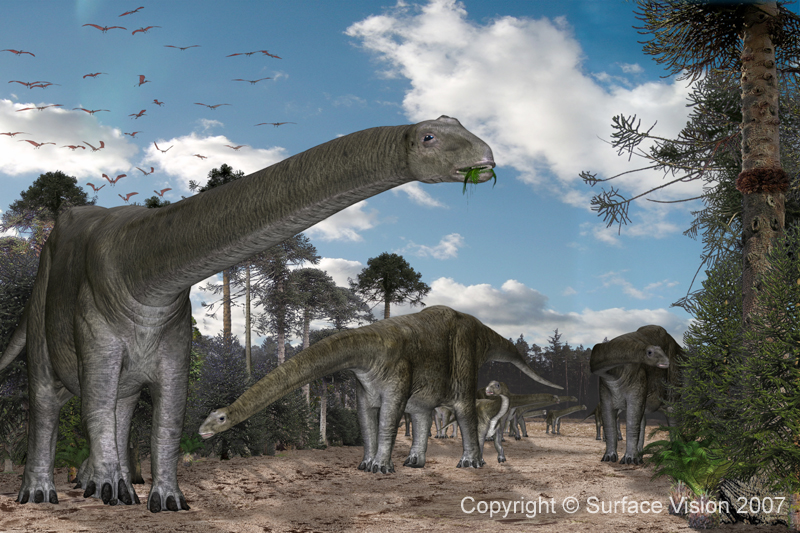CETIOSAURUS CLEARING
In 1841, fossilized bones of Cetiosaurus were discovered on the Isle of Wight. It was thought the bones were of some great marine creature, and it was given the name Cetiosaurus, meaning 'whale-lizard'. Later similar fossil bones were found in Late Jurassic rock strata in America, and a more complete skeleton was recovered in 1868. Thomas Huxley then reclassified the earlier finds of 1841 as being of a similar sauropod type. Recently in 1979 an almost complete skeleton was discovered in Morocco and in 1997, up to 95% of the fossilized skeleton of another close relative, Jobaria was found in the Sahara.
The areas of the finds suggest that this massive sauropod favored a wetland environment, perhaps a mixture of floodplain and open woodland. It weighed well over 20 tonnes and was over18m long, studies of its anatomy suggest that it could not raise its long neck much above the horizontal, so it would have browsed on low foliage. The teeth suggest that it stripped foliage from plants or trees and then let gastroliths (stones retained in the animals stomach) aid its digestion, modern birds, such as geese can be observed swallowing stones, as an aid to digestion, a fact that reinforces the relationship between dinosaurs and birds.

